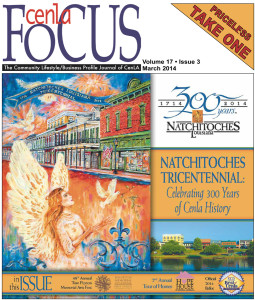
–
–
–
–
–
Our Founding Father
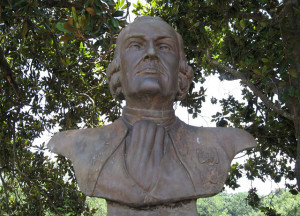
In 1716, Sieur Charles Claude Dutisné was sent to Natchitoches with a small company of colonial troops to build and garrison an outpost that would prevent the Spanish forces in the province of Texas from advancing across the border of French Louisiane. This strategic outpost was named Fort St. Jean Baptiste des Natchitoches.
Economically, Natchitoches evolved into a primary French trade center in the Lower Mississippi Valley. Native American tribes of the three Caddo Confederacies played a vital role in establishing trade and communication links among the French, the Spanish and the Native Americans of the region. The trade that developed with the Caddos forever changed the material culture of the tribes, and by the mid-18th century they were almost completely dependent upon French trade goods. The diplomatic success of the fort was assured when St. Denis was named commandant in 1722. His influence would thrive in the colony until his death in 1744.
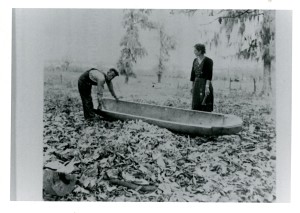
The site obtained for the replication of Fort St. Jean Baptiste is located on Cane River Lake (formerly the Red River), a few hundred yards from the original fort site. The fort replication was based upon Broutin’s plans and on extensive archival research in Louisiana, Canada and France. Construction began in 1979 under the direction of the late Samuel Wilson, Jr. and the Louisiana Office of State Parks. Building materials were obtained locally, and many 18th-century techniques were employed in the replication. Nearly 2,000 treated pine logs form the palisade, and approximately 250,000 board feet of treated lumber went into the construction of the buildings. All of the hinges and latches were handmade at a nearby foundry. Further historical research is ongoing. Today, the fort is known as St. Jean Baptiste State Historic Site. It is open to the public for tours and educates visitors on the unique and colorful history of Natchitoches.
Our Unique Culture
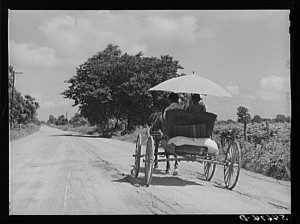
Natchitoches serves as the tourism hub of the rural, agricultural heritage area which stretches 35 miles along Cane River Lake. More than 30 sites within Cane River National Heritage Area are listed on the National Register of Historic Places and have received the distinction of being designated as a National Historic Landmark, including the 33-block downtown district of Natchitoches.
Experience the stories of this region as you travel the Cane River National Heritage Trail, a Louisiana Scenic Byway. Stretching from the Spanish presidio of Los Adaes to the southern tip of Natchitoches Parish, the highways and byways of the Cane River region will engage you whether your interest is in historic plantations, military history, Creole culture and cuisine, or the scenic beauty of the area’s lakes, rivers and forest.
Cane River Creole National Historical Park consists of Oakland Plantation and the outbuildings at Magnolia Plantation. These plantations are two of the most intact Creole plantations in the United States. Both the plantations were established in the 1700’s, and were owned and operated by the same families for the next 200 years. Today, the landscapes contain 65 historic structures surrounded by 200-year-old live oak trees.
Visitors to both sites will experience the evolution of plantation culture. Oakland and Magnolia are not set up to showcase one time period or decade, but rather the progression of a plantation from the 1780s to the 1960s. Among the many topics highlighted in park programs include: Creole culture, slavery, agriculture, mechanization, religion and architecture. Oakland and Magnolia are both National Bicentennial Farms and the only two such farms west of the Mississippi River. The park is open seven days a week, from 8:00am to 4:00pm, except on all federal holidays. For more information, call (318) 356-8441 or visit www.nps.gov/cari/.
Our Tricentennial Celebration
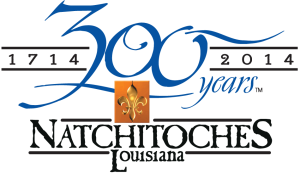
March: Colonial Heritage—Events representing the period that helped frame our colonial heritage will be held. Also, many homes will host a special garden tour throughout the historic district on March 22nd.
April: Music Heritage—The month includes the Jazz/R&B Festival, a tribute to the Big Band sounds of Glenn Miller and others like him will be celebrated. National Park Week and Earth Day will be celebrated in April.
May: Women’s History—Legendary folk artist Clementine Hunter and matriarch of nationally known Melrose Plantation, Cammie Henry, will be celebrated in May. Join us for the annual Melrose Arts and Crafts Festival, Louisiana’s oldest running arts festival.
June: Sports and Recreation—We’ll pay tribute to our newest attraction, the Louisiana Sports Hall of Fame and Northwest Louisiana History Museum; the 2014 hall of fame induction class is the centerpiece in this celebration. Also, 18th Century Fishing exhibits featuring antique fishing poles, lures and tackle boxes will be showcased.
July: Louisiana Heritage—We’ll celebrate with a large Independence Day Celebration on the 4th with entertainment and a spectacular firework show over Cane River Lake. Also be sure to join us for the 35th annual Natchitoches-Northwestern Folk Festival and the Louisiana State Fiddle Championship.
August: Art in August—An art show featuring artists from Cane River, Natchitoches and Louisiana will showcase handmade fine arts and crafts. Artists will display, sell and demonstrate handmade fine arts and crafts including paintings, sculptures, jewelry, woodwork and drawings. Also in August is the annual Cane River Zydeco Festival.
September: Founders’ Day—The month begins with a birthday celebration for the founder of Natchitoches, Louis Juchereau de St. Denis, at Fort St. Jean Baptiste State Historic Site and ends with the annual Natchitoches Meat Pie Festival.
October: Creole Heritage—Stories of Isle Brevelle Creoles and their influence on Natchitoches culture will be featured with celebrations along the Cane River. October also welcomes the Fall Tour of Homes, plantation tours, a haunted history tour of the American Cemetery, the St. Augustine Church Fair, Caddo-Adai Pow Wow and the “Return to the 50’s Antique Car Show” in historic downtown Natchitoches
November: Honoring Our Veterans—A tribute to our veterans, reenactments, a Cane River homecoming and a naturalization ceremony highlight the theme. We will celebrate the 20th anniversary of Cane River National Heritage Area and Cane River Creole National Historical Park. Plus, we kick off the holidays with a special ceremony on November 22nd to ring in the annual Festival of Lights Season.
December: Christmas Heritage—We celebrate the nationally-ranked 88th annual Natchitoches Christmas Festival on December 6th, a festival ranked as the 3rd best holiday light show in the country by Yahoo.com. Also this month is the Holiday Tour of Homes and the Natchitoches/Northwestern Christmas Gala. Fireworks on New Year’s Eve will officially mark the close of the 365-day Tri-Centennial celebration.
Plan Your Trip!
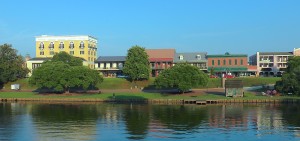
Discover the Natchitoches National Historic Landmark District in downtown. The downtown area was designated in 1974 with a 33-city block area within its borders, and designated as a National Historic Landmark in 1984. Come shop, tour historic buildings that are over a century old, dine on a famous Natchitoches Meat Pie and take a horse drawn carriage tour throughout downtown.
During your visit to downtown Natchitoches, visit Kaffie-Frederick General Mercantile, Louisiana’s oldest general store. Kaffie-Frederick’s was established in 1863 by Jewish Prussian immigrants Adolph and Harris Kaffie. Currently run by a third generation of Frederick’s, Kaffie-Frederick has managed to endure a great number of hardships, beginning with the store’s inception – right in the midst of the American Civil War. In the 1890s, a freight elevator was installed which is still in use today. In 1917, the store purchased its first cash register – run by a hand crank that is also still used for every transaction.
Next, stop by the newly constructed Louisiana Sports Hall of Fame and Northwest Louisiana History Museum. Learn the history and unique stories behind Louisiana’s legendary athletes, coaches and other sports figures that brought crowds to their feet. Then, explore the evolution of unique cultural traditions from early Native American civilizations to the present in the Northwest Louisiana History Museum.
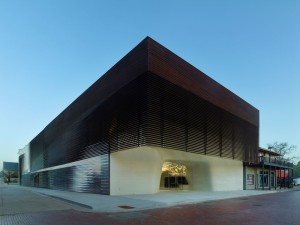
Be a part of history when visiting Fort St. Jean Historic Site, the replica of the old French fort that served as a trading post for the French to exchange guns, knives and trinkets for furs, bear oil, salt with both the Native Americans and the Spanish. Experience 18th Century history through the Louisiana State Park’s interpretive program reenacted within. The fort with its walls of sharpened logs contains the commandant’s house, a small warehouse, a chapel, a mess hall and three huts.
Travel the scenic byways of the Cane River National Heritage Area. Three hundred years ago, the Cane River formed the backdrop for a distinctive landscape of colonial forts, plantations, churches, cemeteries and homes where French and Spanish realms intersected in a brand new world. Today, the National Park System offers visitors an opportunity to experience centuries of history including two historic plantations, Oakland and Magnolia, by exploring the Cane River Creole National Historical Park within in the Cane River National Heritage Area. Learn more by visiting www.CaneRiverNHA.org.
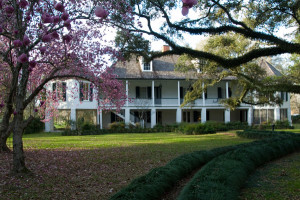
Bring a fishing pole and enjoy Cane River Lake. In 1714 when Natchitoches was founded, this body of water was the Red River. The river changed courses around 1835 and the channel became a 35-mile long oxbow lake. The Cane River Lake in downtown historic Natchitoches is the heart of the city. Festivals and events are held on the downtown riverbank, annually. Front Street lines the riverfront with shops, restaurants and attractions.
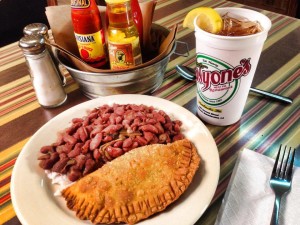
Tour the filming sites of the popular film ‘Steel Magnolias’. In 1988, Natchitoches achieved the national spotlight with the premiere of the classic southern movie ‘Steel Magnolias’. The movie was based on a true story about the Harling family in Natchitoches. Robert Harling, a native of Natchitoches, wrote the screenplay as a salute to his mother and sister and all of their friends. The title suggests the main female characters can be both as delicate as magnolias and tough as steel. Steel Magnolias stared A-list actors such as Sally Field, Julia Roberts, Shirley MacLaine, Dolly Parton, Olympia Dukakis and Daryl Hannah.
Other popular movies filmed in Natchitoches include The Horse Soldiers, filmed in the 1950’s with John Wayne, Constance Towers and William Holden. The movie was filmed on location at Oakland Plantation now a National Park. Then again in the early 90’s, Reese Witherspoon made her acting debut in the Man On The Moon.
For more information on Natchitoches and its Tricentennial, call the Natchitoches Welcome Center at (800) 259-1714 or visit www.Natchitoches.com. Historic Natchitoches is a great place to live, visit, work and play 300 years in the making!









